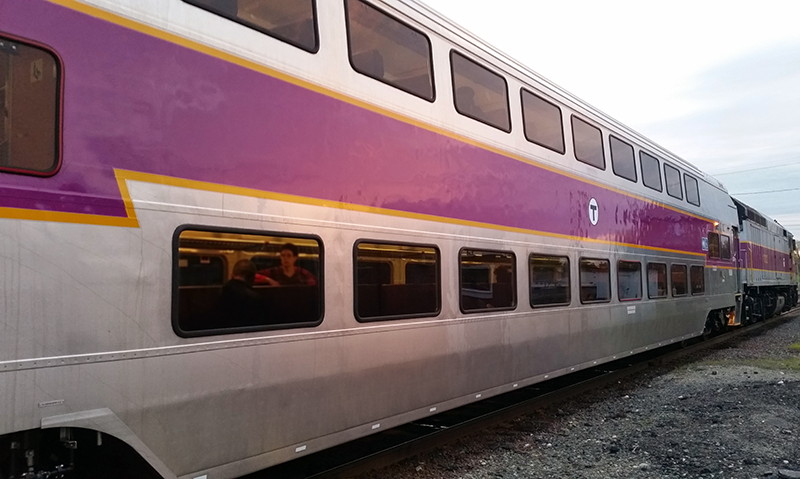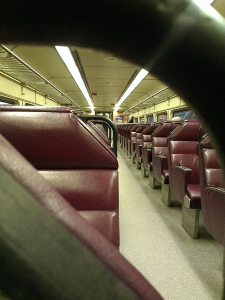Who needs Amtrak?
My writer residency on the commuter rail
In January, Amtrak announced that they were launching a writer in residence program. The internet buzzed as writers rushed to submit their applications, lured by the romance of train travel and the chance to practice their craft free from the demands of the office or the coffee shop.
Though not without hiccups, Amtrak’s Writer in Residence program seems to be mostly a marketing success. The idea was inspired by a remark from novelist Alexander Chee in a PEN America interview with Lauren Cerand:
Cerand: Where is your favorite place to write?
Chee: I still like a train best for this kind of thing. I wish Amtrak had residencies for writers. And after trains, libraries at night, especially empty ones.

Jessica Gross heard Chee’s wishful comment and took to Twitter (along with many others) in agreement. Before long, Amtrak had seized the concept and started to run with it.
Gross became the first writer in residence, making a “test run” from New York to Chicago and back on board the Lake Shore Limited. She wrote about her experience in the Paris Review. The response was positive, and soon Amtrak rolled out the official program.
Up to 24 writers will be selected for the program. Writers must submit an application including writing samples and a few words about why they should be selected. Amtrak says 8500 entries have been received for the two dozen slots.
And who can blame the hopeful wordslingers? Who wouldn’t want a free ride in a private sleeper cabin, with nothing but time to write? The shine has been off the US railroad industry for 70 years, but the vision of riding the rails to romance and adventure is still strong.
Not everybody is as enthused about the program as the residency hopefuls. Some of the clauses in Amtrak’s terms & conditions may not be in the writers’ best interests. And while the writer gets a free ride, there is no free lunch (the writer is responsible for “any costs and incidentals“).
Miral Sattar, writing on PBS’s MediaShift, summarizes the issue neatly and notes, “I, for one, won’t be applying after all. I’d rather just pay for my own ticket … and just keep the rights to my work.” Other writers are finding ways to use the terms to their own advantage.
But the program’s popularity shows that lots of writers love the idea of rail writing. “I think it’s a combination of the set deadline—the end of the train ride,” says Gross on Amtrak’s blog, “[And] the calming movement, and the company of strangers.”
And Dan Zak notes on the Washington Post’s Style blog, “Transit can be pricey, but time is the precious commodity here. If the only way you can get that time is to win a train trip and cocoon yourself in a sleeper car, then by all means. As I said, trains are fun.”
I love the idea of train travel, although my longest trips have only been on the Acela between Boston and New York. I am considering applying for Amtrak’s program, but I’m in no rush. I have my own writer residency twice a day on the Fitchburg line of the MBTA commuter rail. In fact I drafted most of this post on the 408 train.
Sure, there’s no sleeper car (although I and a few of my fellow commuters have been known to doze) but a window seat with a table on the upper level of a double-decker coach makes a pretty nice writer’s garret. And even in the regular, ancient coaches there’s room to open my laptop and get some work done.
And the commuter rail offers some of the same advantages of its long-haul cousin: a finite block of time with nothing else to do, and the world rushing by outside your window.



